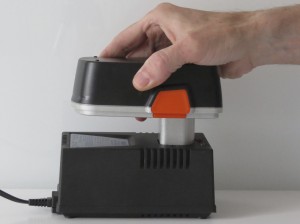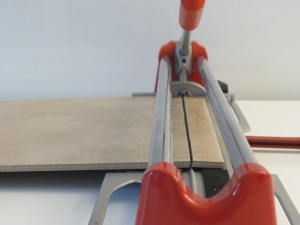The top 10 DIY time-saving tips
Time is always precious and finding the required time to do some DIY is no different in that respect. Therefore below, I’ve compiled a list of my top 10 tips to save time when carrying out DIY jobs. You’ll notice that most of my suggestions are related to planning and how to approach jobs, as I’m really not one for recommending so-called ‘time-saving’ products, as there aren’t many out there as far as I’m aware. Instead, get organised, plan well, and have a read through my more practical time-saving recommendations below.
1. Buy in advance
If you’re planning a weekend of DIY, buy your equipment and materials the week before. Otherwise you lose half of Saturday down at your local DIY shed, which you’ll be regretting by eleven o’clock on Sunday night. So, if you think a particular job is going to take the full weekend, don’t waste half a day before you start.

Always make sure your spare batteries are charged before starting work.
2. Charge batteries
In a world of battery-operated power tools, make sure you have everything that needs charging up sorted the day before you start work.
3. Get ahead
Again, if you’re working a weekend, try and get a time-saving job out the way on the Friday evening. For example, if you’re decorating, look around the walls of the room the night before and fill any large, deep, holes. The filler will dry overnight, so you’re then ready to crack on in the morning. The alternative would mean filling the holes on the Saturday morning, then having to wait for it to dry all day before you can continue to do anything else.
4. Plan your order of work
Ideally write it down, but whatever you do make sure you’ve planned out the right order of work for the project you are carrying out. The other reason I’d advise writing it down is that it gives you a very satisfying checklist to tick off as you achieve each task, but long before this, it helps you picture the work involved. This allows you to estimate how long it will take, and visualise all the different tools and materials you need, so you don’t forget anything.
5. Check your tools
It’s often the case that you get ready to start a job, grab your tools that have been in the shed, and find something is missing, you haven’t got the right size, or you really need a new model of a particular tool. So, do this check the week before you start, so you can add to your shopping list if necessary.

Always buy the best quality tools you can afford. For example, having a good quality tile cutter that can cut straight, thin, pieces will save you hours, and hours, and……hours.
6. Buy quality
Cheap tools don’t really work, cheap materials often result in you using twice as much than is necessary to do the job, and both cheap tools and materials don’t normally last very long. Spend a bit more on quality whether it be a tin of paint, paint brushes, or power tools. Using quality tools and equipment always, always saves time.
Check out my ‘Buying Guides’ for loads more information on what I’ve found to be the best tools and materials for DIY, which as a rule means they’re also the most time efficient.
7. Clear the area
Clearing the area, or room, you are working in will always increase the speed with which you accomplish any DIY job. For example, if you’re decorating a room, get everything out, if at all possible. It then becomes so easy to spread dust sheets, gain access to all areas, and have no obstacles to trip over or work around.
8. Clear people
If people are around, that normally means you’ll get distracted. In other words, get the kids out of the way with friends so you can concentrate solely on the job at hand.
9. Avoid the phone
Don’t look at your mobile, and only take calls in emergencies e.g. the friends you’ve just left your kids with have realised why you wanted them out of the way, and want to give them back!
10. Don’t cut corners
Cutting corners such as using one coat of paint instead of two can lead to an inferior finish, but cutting corners by using too few fixings than required for a job, can lead to far more dangerous results altogether. So always do a proper job, get the best finish, and always be safe.
If you put into practice some, or even all of these tips, I can almost guarantee that you’ll save time on your next DIY job. Also, if you’ve got any time-saving tips you’d like to share, do feel free to add them to the comments below – I’d love to hear about them!
